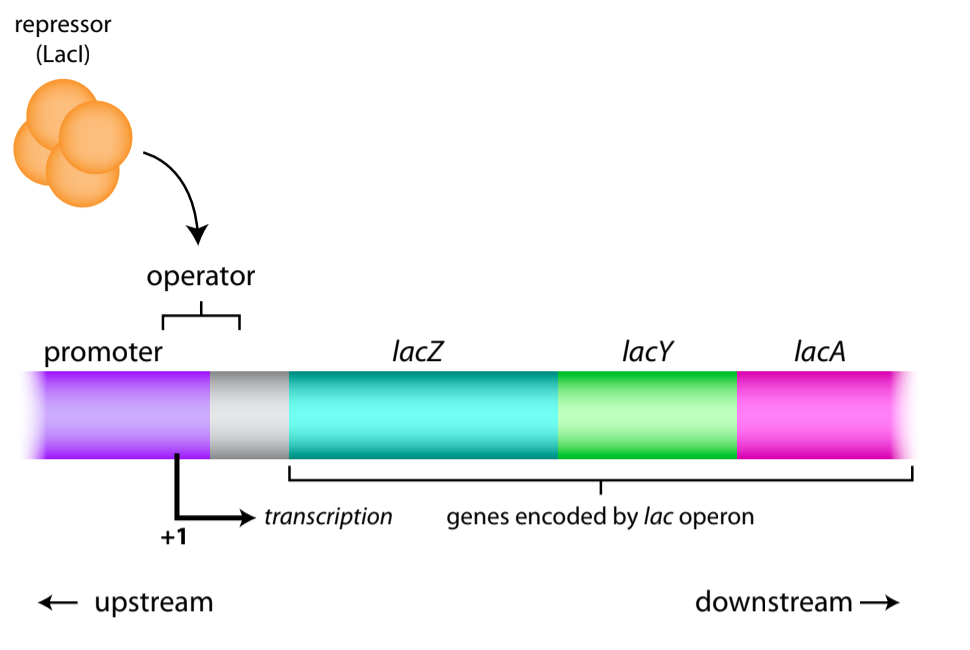-

DNA and its types
DNA, or deoxyribonucleic acid, is the genetic material that carries instructions for all living organisms. It comes in various types, including the double helix, single-stranded DNA, and RNA. DNA can have different conformations and can be supercoiled. Understanding these types is essential for DNA sequencing, genetic engineering, drug development, and forensic science.
-

Attenuation in TRP Operon
Attenuation is a sophisticated gene regulation mechanism found in the TRP operon, responsible for tryptophan synthesis in bacteria. By utilizing the leader peptide and tryptophan as key players, attenuation allows precise control of gene expression based on tryptophan levels. The leader peptide acts as a sensor, adjusting the secondary structure to either block or allow…
-

Lac Operon- Gene Regulation in Bacteria
The lac operon, found in E. coli bacteria, is a remarkable genetic system that controls the metabolism of lactose, a sugar commonly present in milk. This operon comprises three crucial structural genes: lacZ, lacY, and lacA, responsible for encoding the essential enzymes needed to break down lactose into glucose and galactose. Its significance in the…
-

RNA Interference (RNAi)
The article provides an introduction to RNA interference (RNAi), a process by which the expression of specific genes is regulated at the post-transcriptional level. It explains the biochemistry of siRNA and shRNA, the mechanism of action, and the downstream effects of RNAi. The article also discusses the role of RNAi in cancer treatment and defense…
-

Photorespiration
Photorespiration is a complex process that takes place in plants when the concentration of CO2 inside the leaves decreases. This process reduces the efficiency of photosynthesis and ultimately leads to decreased plant growth and yield. In this chapter, we provide an in-depth overview of photorespiration, its biochemistry, regulation, and its impact on plant growth and…
-

Northern blotting
Northern blotting is a technique used in molecular biology and medical research to analyze and detect specific RNA sequences. It involves the separation of RNA by electrophoresis and detection through hybridization. This powerful method has applications in genetics, diagnostics, and environmental monitoring, providing valuable insights into diseases and genetic disorders. Discover more about the principles,…
-

Southern blotting
Southern blotting is a powerful technique used in molecular biology and genetics to analyze and identify specific DNA sequences. It involves the separation of DNA by electrophoresis and detection by hybridization. With applications in medical research, genetic engineering, diagnostics, and environmental monitoring, Southern blotting plays a crucial role in understanding DNA-related phenomena. Discover the principles,…
Categories
- Anatomy (9)
- Animal Form and Functions (36)
- Animal Physiology (62)
- Biochemistry (32)
- Biophysics (15)
- Biotechnology (43)
- Botany (41)
- Plant morphology (6)
- Plant Physiology (26)
- Cell Biology (106)
- Cell Cycle (14)
- Cell Signaling (20)
- Chemistry (9)
- Developmental Biology (29)
- Fertilization (9)
- Ecology (5)
- Embryology (11)
- Endocrinology (10)
- Environmental biology (3)
- Genetics (58)
- DNA (26)
- Inheritance (12)
- Histology (3)
- Hormone (3)
- Immunology (29)
- life science (70)
- Material science (8)
- Microbiology (18)
- Virus (8)
- Microscopy (8)
- Molecular Biology (110)
- parasitology (6)
- Physics (3)
- Physiology (11)
- Plant biology (25)
- Uncategorized (7)
- Zoology (108)
- Classification (6)
- Invertebrate (7)



